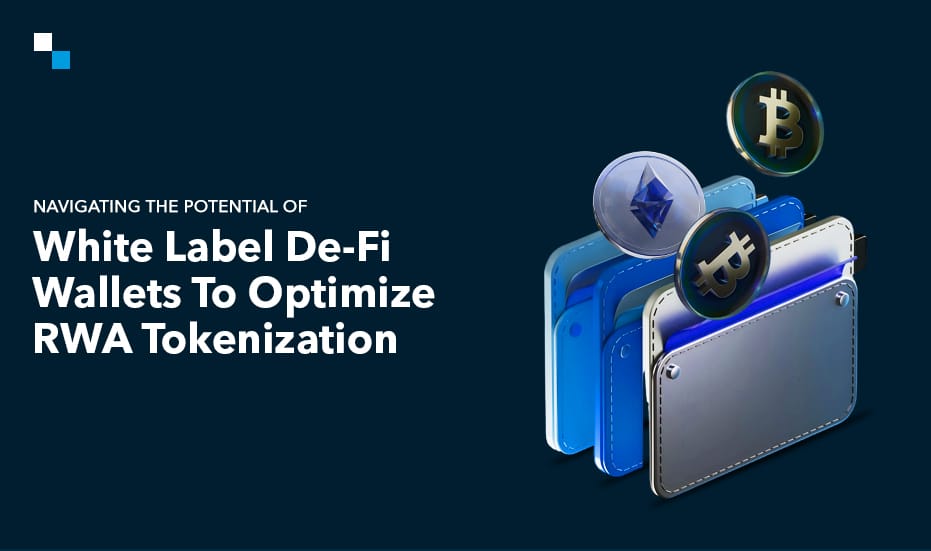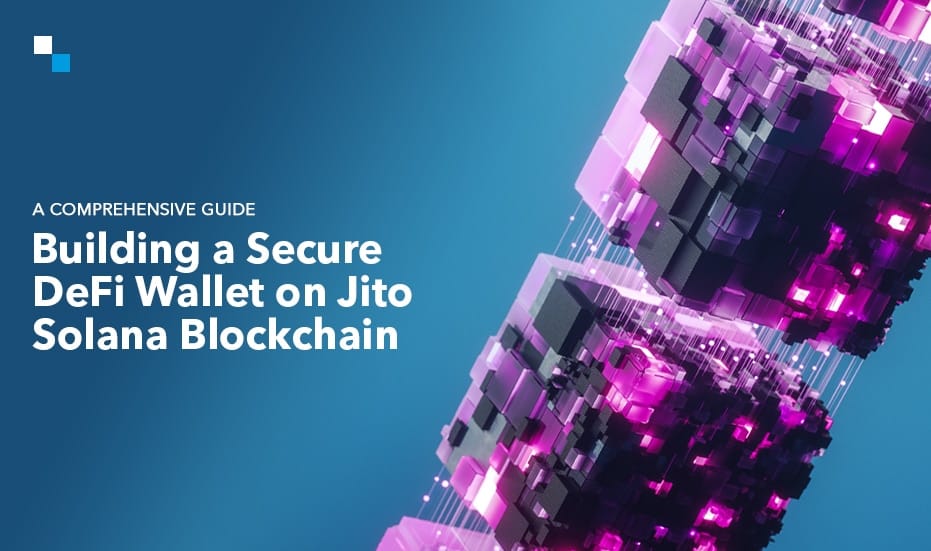
Embrace Business Transformation- Cryptocurrency Development
November 11, 2022
Unlocking Business Building Opportunities With DAO
November 11, 2022A Paradigm Shift from Centralization to Decentralization
In the past, crypto transactions were managed by centralized finance. These act as intermediaries involved in planning and take all the transaction-related decisions on behalf of crypto holders. Since the funds were in the control of the central authority and the allocation decision was in their hands which made the entire process complicated and time-consuming. This was when the concept of decentralization came into the limelight.
Every time a new transaction takes place on the Blockchain network. It doesn’t become a Block directly to be added to a Blockchain. It requires verification initially. The role of verification was moved from a centralized to a decentralized network. The question is who verifies the transaction: Is this the government, RBI, or any other governing body? It is neither an individual nor a group, but a network has been hired to minimize errors.
Benefits of Decentralized Systems :-
Even individuals have tried to tamper with the centralized systems. This has been eliminated by a decentralized network introduced as DeFi Web3 crypto wallet that is highly secure and enables end-to-end encryption while performing the transactions. Apart from this, decentralization offers an array of benefits to the users:
- Distributed Authority to Eliminate the Possibility of Errors and Bias
The biggest benefit of decentralized systems is that it is not governed by an individual, group, or government. It is distributed as a systematic digital network, thereby preventing human errors or bias.
- Provides Real-Time Insights
The miners and traders get the data in real time, thereby eliminating the possibility of data loss or mistakes
- Wise Allocation of Resources
Decentralization ensures that the Blockchain is evenly distributed among various nodes for the optimum use of resources.
- Speedier Transactions
Blockchain transactions are quicker than bank transactions. This is because it involves several intermediaries during the process.These decentralized solutions have been introduced as crypto wallets in the Blockchain landscape.
Understanding the Ins and Outs of DeFi Web3 Crypto Wallets
Did you know that the global crypto wallet market size was at USD 6.97 Billion in 2021 and is expected to surge at a compound annual growth rate (CAGR) of 24.4% from 2022 to 2030? This means more investors are entering this segment to capitalize and earn profits from their investments. As a start-up or an established business, you can venture into the segment by developing Web3 crypto wallets with wallet development experts.
Cryptocurrency wallets are basically software applications that are installed on computers or smartphones. To access a Blockchain network, you need an internet connection. Then, the currency owners can perform the transactions using wallets. You must enter the recipient’s address and the amount and sign the transaction using the private key. Furthermore, you must pay the transaction fee and transfer currency to the other person.
Obtaining currency is quite a simple process. The sender will enter your address and will go through the same route. The transaction succeeds once you receive the payment.
Types of DeFi Web3 Crypto Wallets
Web3 Crypto wallets are of different types, with each one of them having unique features. Let us know what the different types of crypto wallets are:
- Web3 Crypto Wallets
Demand for Web3 has led to a surge in participation in various ecosystems. The Web3 solutions have been introduced as Web3 wallets, basically digital wallets that are used to store fungible and non-fungible tokens. These applications help us access and interact with dApps on various Blockchains. Web3 crypto wallet is a technical product and is developed by crypto wallet development experts possessing sound domain knowledge and expertise.
- Custodial Wallets
Custodial wallets involve a third party that holds the key for you. The third party could be a company that offers enterprise-graded security solutions to preserve and secure business data. One such example of a custodial wallet is a cryptocurrency exchange.
- Non-Custodial Wallets
In the case of non-custodial wallets, it is your responsibility to keep the keys securely. Most DeFi wallets are launched as non-custodial wallets in the market.
Wallets have been divided further into :-
1. Hot Wallet
A hot wallet requires an internet connection to operate. In other words, It is basically a device with a connection.
2. Cold Wallet
A cold wallet requires no internet connection to operate.
3. Software Wallets
Software wallets are made exclusively for desktops and smartphones. You can access cryptos, perform transactions, and view balances. In addition, it comes with an exclusive feature known as exchange integration which cryptocurrency exchange experts add.
Note: Access cryptos using private keys. Anyone who has access to the private keys can access your coins.
- Hardware Wallets
Hardware wallets have garnered a lot of attention from the masses. These are private key-based solutions and can be removed from the device. All you need to do is plug in the wallet before carrying out a transaction on the wallet. Ledger and Trezor are examples of hardware wallets. These fall under the category of cold wallets because their connection isn’t termed active until they are plugged in.
Note: New hardware wallets come with a special feature of Bluetooth connectivity. Use this option carefully, as the wireless signal can be accessed by unwanted parties when in the working state.
- Paper Wallets
In the past wallet, users typed or wrote the keys on paper, commonly known as paper wallets. They come with keys and QR codes so that wallets present on smartphones can scan them. Unfortunately, paper wallets experience damage or are lost quite often, and that is why wallet owners don’t use them.
Security: A Prominent Crypto Wallet Concern
Did you know that in 2022 so far, over $1.7 billion in funds have been stolen from crypto wallets?
Apart from increasing popularity, DeFi Web3 crypto wallet security has become a major cause of concern among traders and investors. This is because hackers and spammers are adopting illicit means to access these coins. However, there are ways that you can integrate to enhance the security of the wallets listed below:
- Use Highly Secure Web3 Wallets
No one wants to build a financial portfolio that a hacker has wiped out. These wallets have been developed to keep user assets safe. DeFi Web3 wallets are integrated with enterprise-grade security features to ensure that funds remain safe in the wallet.
- Avoid Using Public WiFi
Whenever you are accessing the wallet using the internet, make sure that the connection is secure. Try using a VPN that hides your IP address and prevents DNS leaks. With this, no one knows where you are, and it helps you access region-locked content.
- Maintain Distance
If you have several crypto assets, avoid keeping them in a single basket, as it makes the investment vulnerable to threats.
In case of loss or theft, these wallets aren’t insured by the government or any party. Since it is the responsibility of the users to protect the data, law enforcement agencies won’t be able to provide back the lost currency. Alternatively, try changing the permissions while accessing the crypto wallets.
4 Crypto Wallet Changes that will Increase Web3 Adoption
- Consolidation with Interoperability
Most Web3 DeFi wallets have been developed on distinct Blockchains and cannot interact with each other, making digital asset transfer impossible on the platform. Interoperability allows these wallets to interact with each other and makes these systems more convenient.
- Simplifying the Onboarding Process
Most wallets don’t provide user-friendly interfaces that aim to enhance users’ experience. To minimize these issues, Web3 wallet development experts are coming up with simple onboarding procedures, as few users have the time to go through the videos and read lengthy articles uploaded on the platform.
- Contactless NFC(Near Field Communication)
Near Field Technology is a wireless communication technology that was introduced in the 1990s. This technology gives devices in close proximity the opportunity to interact with each other. This technology promotes peer-to-peer file transfer or making payments via tap-and-pay procedures. With NFC, all the payments would be made instantly without any third-party involvement or any additional fee payment.
- Simple User Interface and User Experience
Crypto wallets are slow and complicated, with slow adoption and retention. It expects users to remember 24 or more words to access the wallets and exchange assets with the users. A crypto wallet of the future must have a simple and stunning user-friendly interface. Using the app must be as simple as using social media platforms.
Launch your own Web3 Crypto Wallet
Schedule Free DemoA Promising Future Offered by Web3
Web3 is moving towards decentralization and will gain a competitive edge over Web2 tech giants like Twitter, Google, Facebook, etc.Web3 solutions will provide real-time data and will emphasize enhancing the user experience by simplifying the onboarding process and integrating simple yet stunning designs.
Step-By-Step Web3 Crypto Wallet Development Process
Below is the step-by-step that would help you develop a Web3 crypto wallet, so let us have a look:
-
Market Research with Technical Analysis
Before getting into the development phase, it is vital to perform market analysis and comprehend business requirements. You need to understand the technical aspects of development in detail. During this, the developers will understand the purpose of the project and their contribution as Web3 cryptocurrency wallet developers.
-
Designing The Architecture of the Business
Once you have understood the project requirements, it is time to head toward wallet app architecture and coordinate with the clients simultaneously. During this step, the wallet’s front and back ends are developed, and data storage and retrieval facilities are added with transaction details. The architecture is a blueprint used in all stages of development.
-
UI/UX Design
Now we have moved to front-end development during this process; stunning UI/UX design will be integrated. During this phase, different wallet parts are built, and the decision on their working or interaction with the users. During this, a low-fidelity prototype is developed to give a rough idea to the client. Also, a high-fidelity design would be the final look of the wallet.
-
Smart Contract Integration
This step is optional as every firm doesn’t integrate smart contracts in their applications. This helps to make crypto wallets functional and comprise the account recovery process, speed up the transaction process, and stretch limits. Ensure that once the smart contract is developed, it is audited and tested at its early stages.
- Back-End Development
Before the back-end development, ensure that cryptocurrency wallet developers’ skills and expertise are considered. It comprises code writing, and Smart Contracts are executed during the process. During this stage, developers can take advantage of Coinbase SDK or Bitcoin SDK. During this step, a connection between the cryptocurrency wallet and the Blockchain is formed.
-
Testing
The wallet would be tested on several aspects. First, oversights or bugs must be eradicated to minimize market time. Once it is properly tested, it is ready for deployment and is ready to be used by the target audience.
-
Deployment
After performing the above-mentioned steps, it is time to make the platform available for the users. During this, ensure that specific guidelines on the platform are followed.
Commence Your Web3 Wallet Development Journey with Antier!
Antier is a trusted Web3 crypto wallet development agency. We have a team of adroit Blockchain analysts and developers that will provide enterprise-graded solutions. Our experts will analyze your business requirements thoroughly and conduct market research before recommending Web3 crypto wallets solutions to you.
Share Your Ideas With Our Subject Matter Experts Today!



